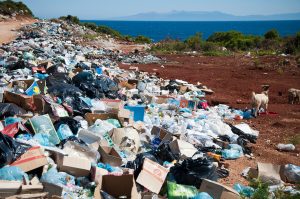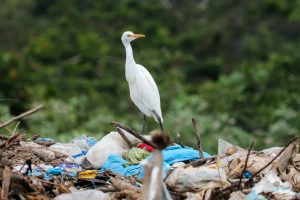This year world leaders at the United Nations Environment Assembly (UNEA) made the decision to negotiate a global plastics treaty by the end of 2024[1]. But what could a global treaty mean for plastic pollution around the world? And what are the next steps for negotiating the treaty over the coming years?
What has been decided?
On 2 March 2022, world leaders from over 200 countries gathered for the fifth session of the United Nations Environment Assembly (UNEA) in Nairobi, Kenya. Representatives from countries made history when the majority agreed to negotiate an international legally binding agreement aiming to end plastic pollution. The resolution has been deemed as an important opportunity to make a real difference to address plastic pollution by the head of the UN Environment Programme (UNEP)[2]. So far, a key decision has been made: to implement a treaty which has legally binding measures and pledges to address the full lifecycle of plastic – from production to disposal. This is an important first step, with the potential to tackle plastic pollution at source which has often been a gap in current laws. Additionally, the resolution specifically recognises microplastic pollution as an area to tackle. By addressing the full life cycle of plastic and microplastic pollution specifically there is scope to include measures that focus on nurdle pollution. The overall objective of the treaty is to reduce plastic pollution from the environment, however, details and scope of the treaty are yet to be negotiated over the coming years, with a drafted treaty aiming to be ready by the end of 2024[3].

What happens next?
The agreement between nations has been the first important step in the treaty process. One outcome of the resolution has been an Intergovernmental Negotiating Committee who will be responsible for drafting the content of the treaty. Next steps for this committee will be to start working on negotiations later in the year to start the process of drafting the treaty by the end of 2024.
As well as drafting the text of the treaty, the committee will also make decisions on the scope of the treaty, which parts will be legally binding and how it will be financed. These will be important decisions as this will determine how ambitious, equitable and effective the treaty is.
What could a global plastics treaty look like?
From the highest mountain ranges[4] to the deepest marine environments[5] plastics are everywhere and threaten whole ecosystems. Latest research shows plastics now contaminate our blood[6], the air we breathe[7] and the water we drink[8]. At current rates of consumption, plastic production is predicted to quadruple by 2050[9]. There has never been a more urgent time for nations to work together and coordinate a response to this persuasive and damaging pollution issue.
If the plastic treaty is ambitious enough it could set a framework which requires countries to limit how much virgin plastic is produced, enforce stringent standards within industries that use plastic and develop effective systems for waste collection and recycling, including addressing the toxic chemicals associated with plastics. Helping the world move towards a circular economy.

There’s hope for chemicals too
Another important agreement reached at UNEA was the decision by leaders to set up an intergovernmental science policy panel to advise on chemical pollution and waste[10]. This panel was based on the intergovernmental panel set up to advise on climate change (IPCC). The chemical and waste panel will specifically advise on recommendations to reduce the environmental impact of mineral extraction, and management of nitrogen waste. The establishment of this panel means world leaders have finally recognised that the issue of chemicals, waste and plastics come hand in hand and need to be addressed together in order to achieve a fully circular economy.
Call to action
As governments start the process of drafting the plastics treaty, we need to show them there is support for ambitious action now as well as a need for global commitments. You can show you care about plastic pollution by taking part in nurdle hunt and logging your finds on beaches, rivers and ports. Nurdles are the first step in the plastic supply chain, these plastic pellets are made by industry and then transported around the world before being melted down and made into plastic products. Thousands of people taking part in a nurdle hunt cannot be ignored and the evidence we gather proves this is a global issue needing urgent attention. We are sharing global nurdle data with NGOs, governments and scientists around the world to help them push for change and global commitments. Plastic pollution starts at source with nurdles, and this pollution is preventable with better handling of pellets. In addressing the full cycle of plastic we don’t need to wait for the global treaty we can start today.
Read more about how you can take part in a nurdle hunt and Fidra’s other projects that tackle plastic and chemical pollution.
References
[1] https://www.unep.org/news-and-stories/press-release/historic-day-campaign-beat-plastic-pollution-nations-commit-develop
[2] https://www.unep.org/news-and-stories/story/unep-head-responds-questions-global-plastics-agreement
[3] See ref (1)
[4] Napper, Imogen E., et al. 2020. Reaching new heights in plastic pollution—preliminary findings of microplastics on Mount Everest. One Earth 3.5: 621-630.
[5]Jamieson, Alan J., et al. 2019. Microplastics and synthetic particles ingested by deep-sea amphipods in six of the deepest marine ecosystems on Earth. Royal Society open science 6.2.: 180667.
[6] H.A. Leslie, M.J.M. van Velzen, S.H. Brandsma, D. Vethaak, J.J. Garcia-Vallejo, M.H. Lamoree. Discovery and Quantification of Plastic Particle Pollution in Human Blood. Environment International (2022), 10.1016/j.envint.2022.107199
[7] J. Gasperi, S.L. Wright, R. Dris, F. Collard, C. Mandin, M. Guerrouache, V. Langlois, F.J. Kelly, B. Tassin
Microplastics in air: are we breathing it in? Curr. Opin. Environ. Sci. Health, 1 (2018), pp. 1-5, 10.1016/j.coesh.2017.10.002
[8] D. Eerkes-Medrano, H.A. Leslie, B. Quinn Microplastics in drinking water: a review and assessment
Curr. Opin. Environ. Sci. Health, 7 (2019), pp. 69-75, 10.1016/j.coesh.2018.12.001
[9] Minderoo Foundation, The plastic waste makers index; and carbon tracker initiative, annual report 2020, online: https://carbontracker.org/reports/the-futures-not-in-plastics/
[10] https://www.chemistryworld.com/news/world-agrees-to-sign-up-to-a-treaty-to-control-plastic-and-chemical-pollution/4015327.article
